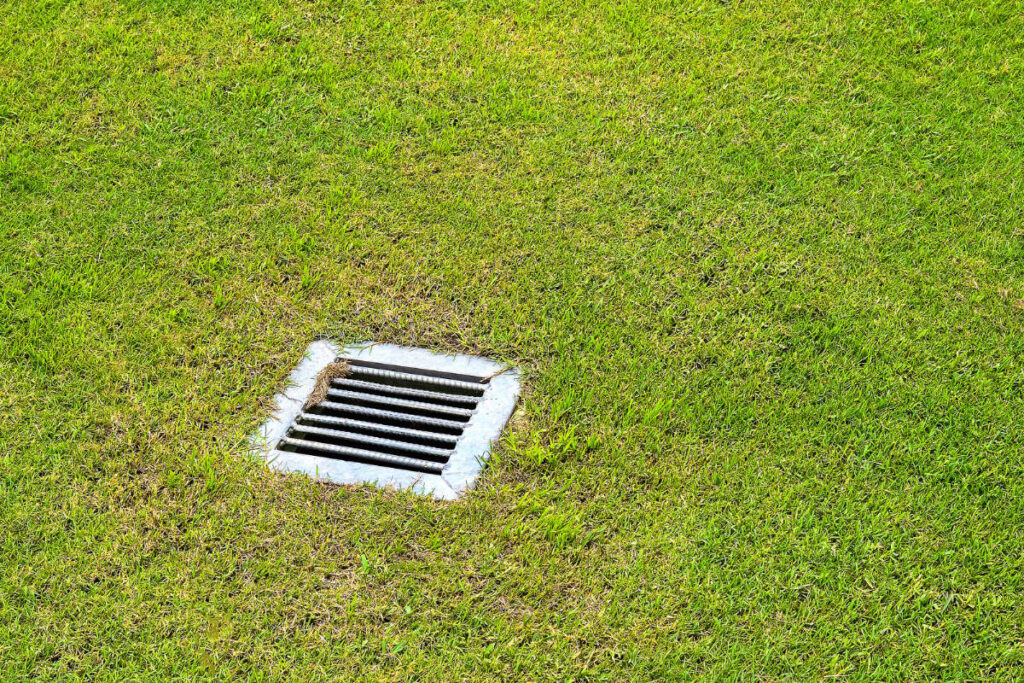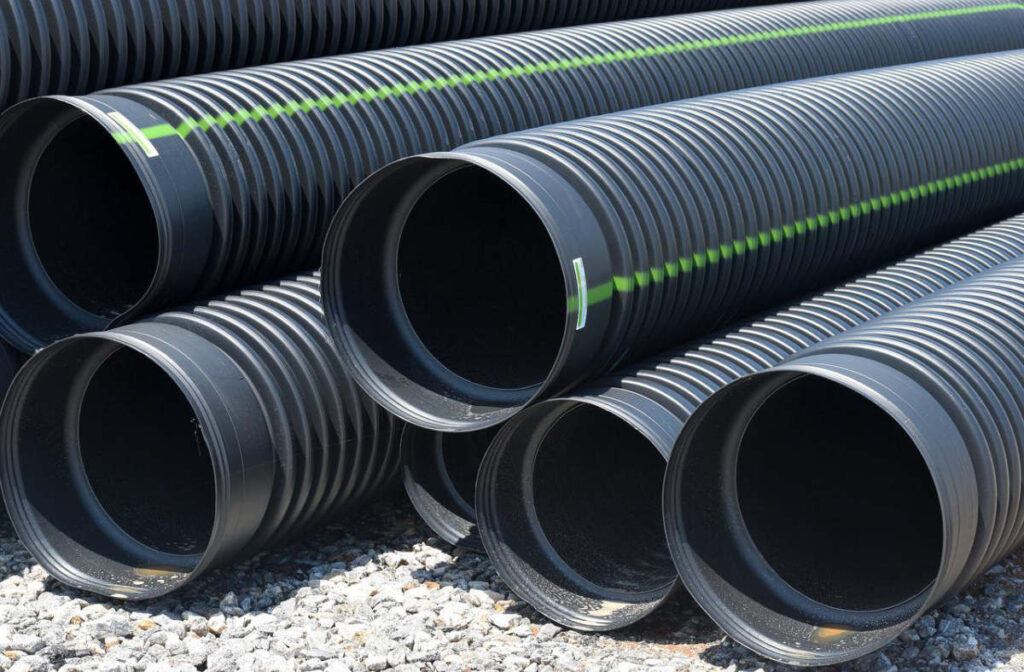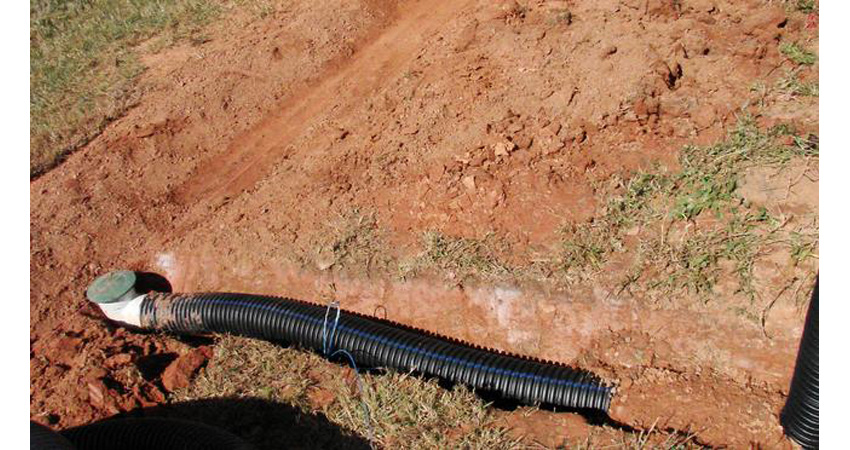If you’ve ever asked yourself, why won’t my yard drain after a rainfall, then you need some help with yard drainage. There are a number of ways to improve drainage, some more complicated than others. If water is standing along a structure, like a garage or your house, you’ll probably need a significant drainage system, like a french drain. However, other issues can often be fixed with simpler methods. These might include minor regrading of the soil in a particular area, adding a dry creek bed to channel the water, a grass swale or installing a drain. Our focus in this article will be installing yard drains with small catch basins to help solve for a few puddly spots out in the grass.
Learn more about Yard Drainage
View our Yard Drainage Article
What are Yard Drains?
For fairly simple drainage issues, installation of a yard drain with a catch basin can make a big difference. On the surface a yard drain looks a lot like the drain in your shower, only it is usually green to match the lawn. A catch basin is simply a container that collects water that enters the drain. The catch basin will need to drain the water to another location, either an outlet someplace where the water won’t puddle, or in a dry well. In some cases, you’ll need a series of yard drains connected to each other so that the water drains properly from the yard and doesn’t end up standing against the house foundation or creating long-term puddles.

How to Install a Yard Drain
Once you’ve identified the area that needs drainage, you’ve completed the easiest part of the project. The materials to complete this job aren’t very expensive and can usually be found at any local big box home center. However, the labor involved can be quite extensive. That’s why many homeowners prefer to pay an experienced drainage contractor to do the job.

Once you’ve located the problem area, the next step is to figure you where you can move that water to without creating another puddling problem. If your lucky, this won’t be a very long distance away. You’re looking for a spot down hill from your existing problem, where the water naturally drains well. Once you identify the outlet point, you’ll need to dig a trench from where you want the drain located to the outlet point, making sure it has a gradual downward slope to keep the water running. Short runs can be done by hand with a shovel, but for longer runs, a trenching tool makes the work a lot easier.
Dig a hole for your catch basin and drain cover so that the drain cover sits right at ground level and the basin exit lines up with your trench. You’ll need to dig out some extra below the basin and fill it with gravel to help improve drainage under the catch basin. Install the catch basin and connect a corrugated drainage pipe that will run the length of your trench.
At the exit from your drain, you can use a pop-up sprinkler, or cover the exit of the pipe with landscape cloth to keep it from getting clogged up or become home to critters. Once you’ve tested the drain to make sure it runs downhill, cover over your trench. Your water problem is solved and with a little extra seeding or sod, your grass will cover up your trench in a few weeks.

What About a Dry Well?
If you can’t find a good place to send your unwanted water, you may have to install a dry well. This is essentially a large catch basin that stores water and disperses it back into the surrounding ground. The drain installation process is the same, except you can run it to the site for the dry well. You can buy plastic dry well kits, that combined with gravel and some pretty deep digging will solve most drainage problems.
Yard drains are only one way to make a water problem go away. The best way to figure out if a yard drain is the right solution is to contact a professional. A walkthrough of your yard will give a professional the knowledge they need to suggest the correct solutions for your specific drainage problems.
Need Help?
Call Benton Outdoor Living at (704) 604-2813

